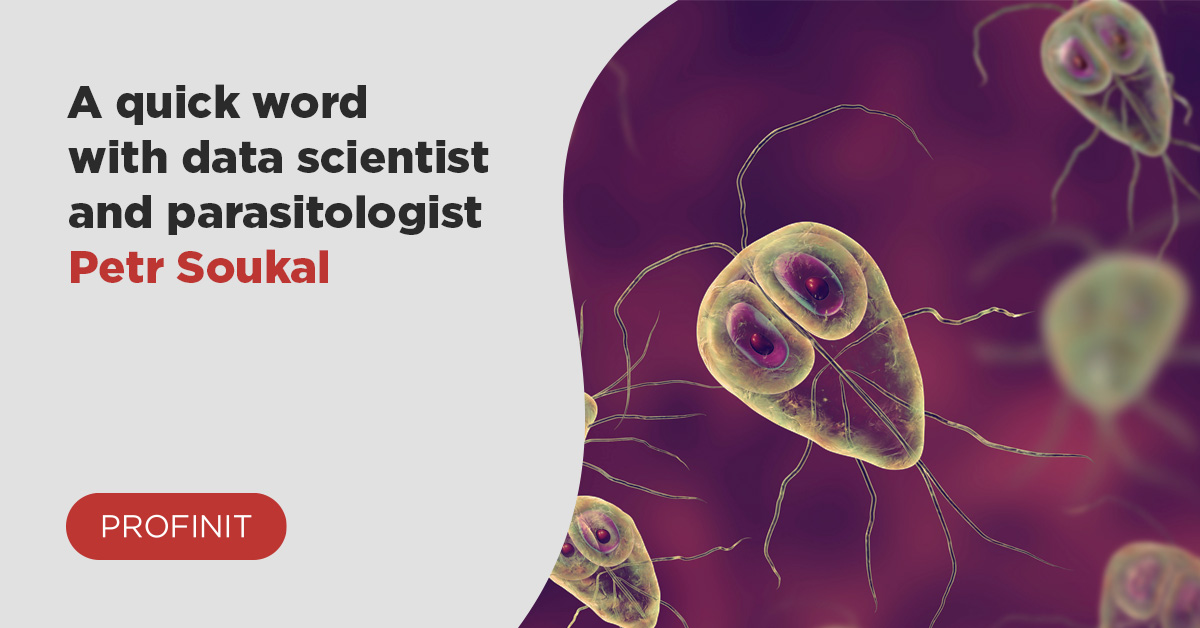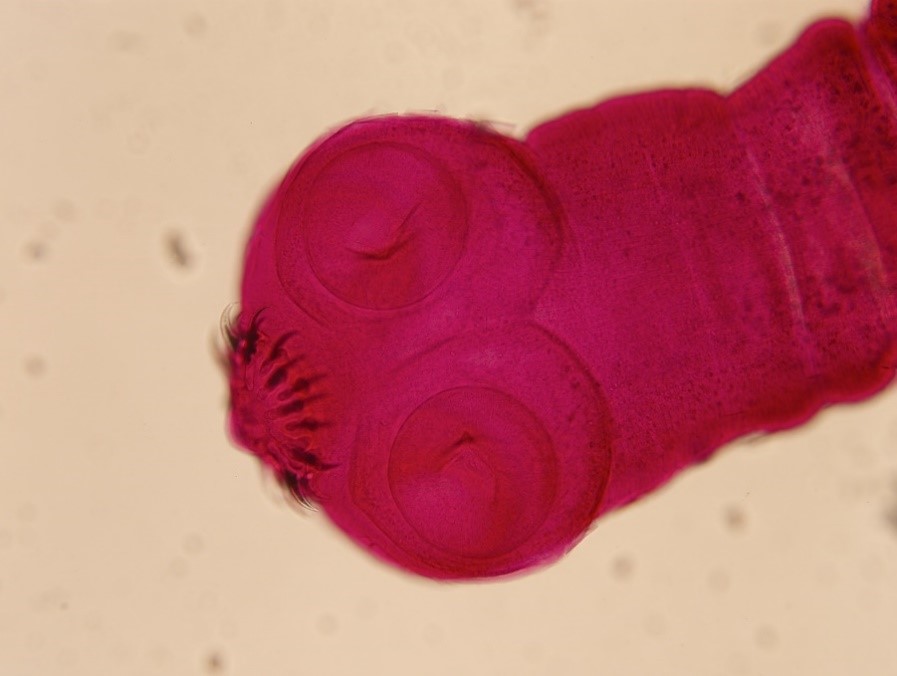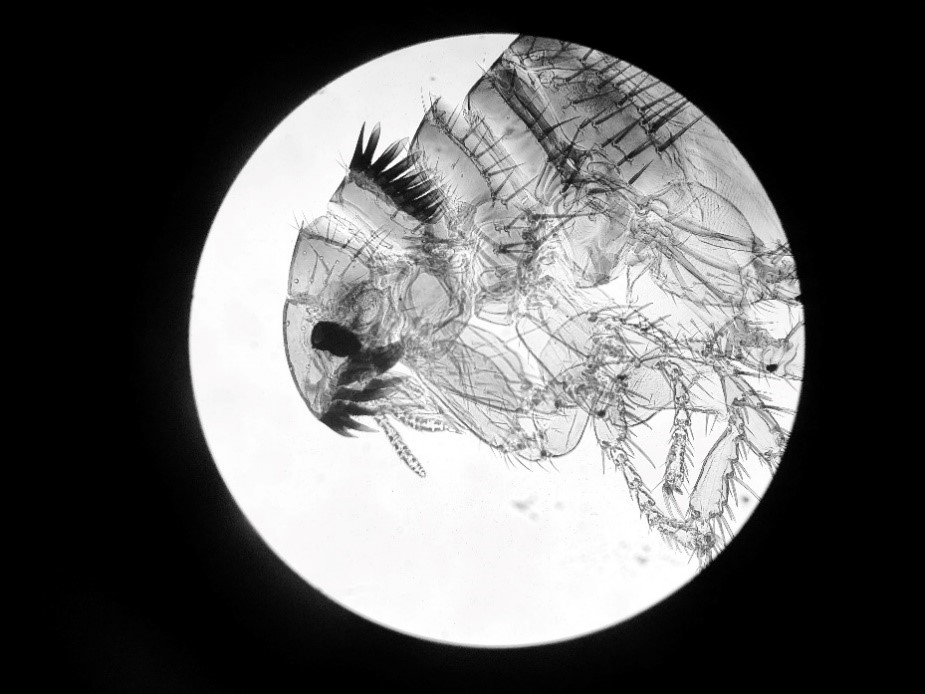Petr Soukal works at Profinit as a data scientist, but besides the world of data science he is also fascinated by parasitology. In this interview, he reveals how he came to be interested in it and what fascinates him the most about parasitology, as well as why ants should watch out for the lancet liver fluke 🙂.
1. Hello Petr. So, how did you come to be involved in parasitology, and what do you like most about it?
In a roundabout way. Ever since I was a little kid, I was fascinated by numbers, nature and data collection. After grammar school, I chose to study physics, which in my opinion was the easiest field (I found mathematics too abstract). During my master’s degree studies in nuclear and particle physics, I thought to myself, well, why not try biology after all? Parasitology seemed to be the most complex field—a parasitologist must understand not only ecology, that is, how individual hosts of parasites live, but also the biochemistry of the hosts. And so, in the end, I decided on parasitology.
And what fascinates me the most about it? I would say that it’s the life cycle of most parasites, such as tapeworms, roundworms, but also leeches, mosquitoes or blood-sucking butterflies. For example, the lancet liver fluke (Dicrocoelium dendriticum) controls ants in a way that gets them eaten by sheep. Forensic entomology is also somewhat related to parasitology, that is, determining the time of death based on the composition of the insect and mite fauna on a decomposing body.
2. It sounds like you’re a true expert in parasitology! How often and regularly do you devote yourself to it?
That’s a bit of an odd question 🙂. Mostly I come by parasites by chance; for example, recently a friend brought me a child’s head louse (Pediculus capitis), which I have been looking for several years because I am making a fixed specimen from it for microscopy. Then, about three years ago, I got a live dog tapeworm (Dypilidium caninum) for Christmas, which was over half a meter long, but it died a few hours after leaving the host. Otherwise, from spring to autumn, I collect insects, especially the two-winged species, which have the greatest number of parasites—this includes black flies (Simuliidae), midges (Ceratopogonidae), tsetse flies (Glossinidae), ked flies (Hippobosciadae), bat flies (Nycteribiidae, Streblidae), and mosquitoes (Culicidae)—and also fleas (Siphonaptera) and other ectoparasites. It’s worse with endoparasites—you have to find a fresh corpse, dissect it and just hope.
3. And what do you do at Profinit? How long have you been working for us?
I’ve been at Profinit for 14 months. Currently, I’m working on a project for a big pharmaceutical company, where I’m working on data ingestion. During my studies in physics and parasitology, I analysed large quantities of data, whether from particle detectors in accelerators or the genomes and transcriptomes of different groups of organisms. And I also learned “big” coding—first it was C++, later Python, then R and LaTeX. And that took me all the way to Profinit.
4. Your colleagues said that you’re working on your PhD, and teach microscopy. Is that so?
I defended my PhD thesis about two months ago. As part of my study of parasitology, I studied the evolution of plastids in Euglenids. For quite a long time I devoted myself to the determination of protozoa and algae, which I also taught at the Faculty of Science.
I teach microscopy for schools at the “Stanice přírodovědců” (“Natural Science Station”) in Smíchov. Many schools do not have (high-quality) microscopes, so they complete part of their lessons here. The programme is primarily intended for children in grades six through nine, but also for high school students. The material taught is usually of a biological nature—we observe living organisms (protozoa, algae, mites, etc.) and permanent mounts (e. g. fleas, tapeworms). But what the children enjoy observing the most are the dangerous things—the trichomes of nettles, mosquito or tick suckers, or stingers of wasp and bee. Over the course of eight years, I also got to know several exceptionally gifted children. The teaching has two stages: First, the children get to know the microscope and its operation, and in the second stage, we observe different samples, depending on the instructions of the teacher. In the past, we used to observe protozoa from cultures (amoebas, ciliates and euglenids), but we found that samples taken directly from nature—from forest pools, muddy puddles or manure—proved more successful. If anyone were interested, I can arrange microscopy for people from Profinit 🙂.
5. Thank you for the interview!
The scolex (“head”) of the pork tapeworm (Taenia solium), which as an adult parasitizes the human intestine and its larval stages are found mainly in the muscle of pigs, but also in the brains of humans—the neurocysticercosis has a high prevalence (often occurs), for example in Mexico. It is rarely found in the Czech Republic, and Jan Werich was probably the last Czech infected by it. His tapeworm (several meters long) is kept in the collections of the Department of Parasitology of the Faculty of Science, Charles University.
Photo: Petr Soukal
“These are dog fleas, they don’t attack humans”, says Josef Kemr in a well-known Czech film. The dog flea (Ctenocephalides canis) in the picture above (at 40x magnification), as well as the very similar cat flea (Ctenocephalides felis) actually do attack humans, but only reluctantly—unlike the human flea (Pulex irritans), which is also found on pigs (Sus scrofa). One Czech parasitologist let all three species feed on him and identified the bite of the cat flea as clearly the most painful, while the human flea bite was the least unpleasant. The “teeth” (more precisely chitinous combs) that the flea has under the eye and behind the head are used by fleas to stay in the fur of the host and by parasitologists to determine their species (the human flea has no “teeth”).
Photo: Petr Soukal


